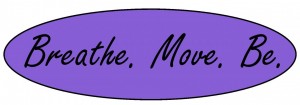After hundreds of years, it appears that modern western medicine is beginning to acknowledge the intimate connection between the mind and body, a concept that has never been lost in thousands of years of yogic science. According to yogic teachings, when there is stress in the mind, it is manifested as stress in the body and vice versa.
The body and mind are vast storehouses of our experiences of life. The mind remembers events from the past with varying levels of accuracy and distortion, it can imagine things that never occurred, it records sights, smells, sounds and feelings all of which are anchored in our bodies by the emotions attached to each of the events, the stronger the emotion, the greater the anchoring.
Over time, the body begins to shape itself in response to these stored life experiences. For example, someone who has come to believe that s/he is not valuable may present with rounded shoulders and drooping head. The extra load placed on the upper spine by this misalignment may translate into lower back pain. This pain may cause the individual to impose restrictions on his/her movement that results in tightening of the hips, which results in uneven walking gait and pain in the feet. As the old song tells us, the head bone truly is connected to the foot bone.
Yoga practitioners have long recognized the benefits realized by the mind as the body begins to become more supple and open. Likewise, releasing mental/emotional patterns allows for greater movement in the body. Through our yoga practices, the body is moved in ways that are not habitual allowing for the release of long-held energy, associated with unexpressed emotion, through the body. With changes in physical patterns of movement come shifts in patterns of thinking and feeling.
What comes to mind when most people hear the word “yoga” are the impossible-looking, bending, twisting poses depicted in magazine articles. People have told me, “I can’t do yoga. I’m not flexible enough.” That’s like saying, “I can’t lift weights because I’m too weak.” To achieve the benefits of yoga does not require that the practitioner to be able to touch his/her toes (Although everyone can by bending the knees). S/he merely needs to desire to touch the toes. With the physical movement, in proper alignment, that comes from reaching for the toes comes release of physical, emotional, mental and spiritual patterns that contributed to the original loss of ability to touch the toes.
Everyone can benefit from yoga. Fortunately, yoga is available in most areas through yoga studios, gyms and community centers. If the idea of attending a class is intimidating, seek out the instruction of a Registered Yoga Teacher for a few private lessons to help you get started. Registered Yoga Teachers (RYT) can be located through the Yoga Alliance web site. Visit the Yoga Alliance web site for a list of teachers in your area. If this is not possible for you, there are many videos, geared toward the beginner, that are available on the Yoga Alliance web site or through your local library.
Move forward with patience. The physical, emotional, mental and spiritual patterns that have formed in your mind and body have done so over years. Expect that it will take time and practice to shift these patterns.
Namaste,
geo



